
Villa
Balbianello Monzino
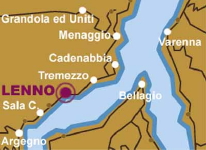 |
 |
Built
for Cardinal Angelo Maria Durini at the end of the XVIII century,
the Villa stands on the tip of a steep promontory
overlooking Lake Como, almost opposite Bellagio.
Today,
the villa has the appearance desired by its last owner,
the explorer Guido Monzino,
with a rich collection of Chinese, African and pre-Colombian art,
precious English and French furniture of the 1700s
and the small museum with documents and mementoes of his expeditions.
Yet the true masterpiece is the panoramic terraced garden
dominated by the elegant "loggia" with three arches
rising on the highest point of the promontory.
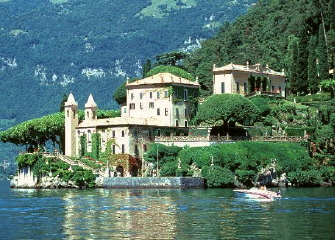 |
Church
from the Middle Ages
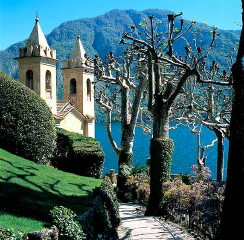 |
In the Middle Ages the area of Lenno was characterized by many religious
settlements.
Of that period is the church of San Giovanni, with its two bell towers,
now incorporated into Villa del Balbianello.
In
1797 Cardinal Durini bought the neglected
and decayed convent and turned it into a de-lux residence. He changed
the medieval architecture of the building into Baroque style surrounding
it with a beautiful garden.
|
Originally
the church was part of the convent of Cistercian nuns under the
rule of the See of Santa Eufemia of Isola Comacina. In the late
Middle Ages it became a convent for Franciscan Friars and from
1535 until it was dissolved, for Capuchin Friars. All that remains
from that period is the front face of the little church with its
two slender bell-towers.
|
The little
church can be reached both from the landing stage and the small harbor.
From there you walk up winding paths which, at each step,
offer spectacular views of the lake, until you reach the villa and the
Loggia.
On the way up you see big plane trees pruned every year into a candelabra
shape,
ancient statues and wisteria. In
some parts it was necessary to cut a path out of the rough rock face
which is softened, here and there, by clinging ivy.
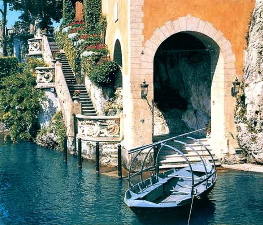 |
The setting on the Lavedo point, combined with the romantic arrival
at the water gates landing stage, turn the expedition into an Arcadian delight!
Remote from lakeside tourism, exquisite Balbianello, set in sylvan woods of pine, soaring cypresses and oak, with pollarded plane trees and manicured lawn and flowerbeds, seems enchanted.
 |
 |
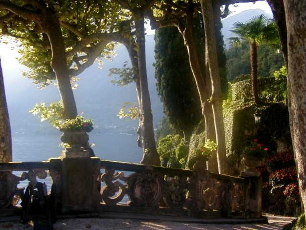 |
With unparalleled views down the three branches of the lake,
and fronting the promontory of Serbelloni, the first villa was built in 1540,
but was later moved to a new site inland to protect from flooding.
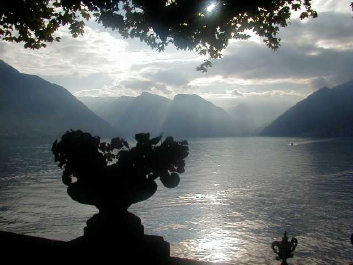 |
The idealized giardino inglese has balustraded terraces with
sweeps of curving beds of roses, azaleas and wisterias along winding paths,
all pruned in graceful curves that follow the rock formations.
Creeping Fig on the walls
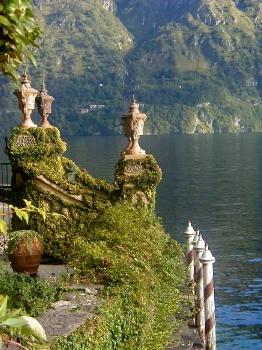 |
 |
The Loggia
Cardinal
Durini erected
a casino with a loggia in 1790, open to the breezes
and today "trellised" with Ficus
pumila (Creedping Fig)
and flanked by a library and music room (shown below).
It was built a little beyond the house and right in
the middle of the headland.
 |
The Loggia is
the real architectural innovation of Balbianello,
as it is set parallel to the promontory. Guests could get two different
views
of the superb lake scenery at one and the same time:
on one side Tremezzina - the very heart of the lake - and on the other,
the stretch of water towards the islet of Comacina.
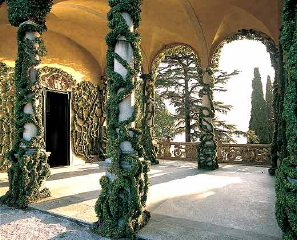 |
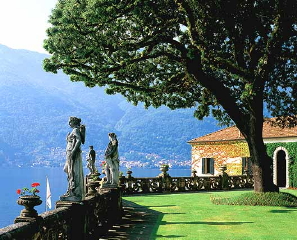 |
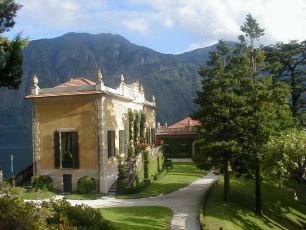 |
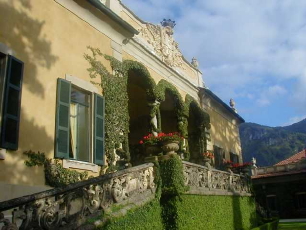 |
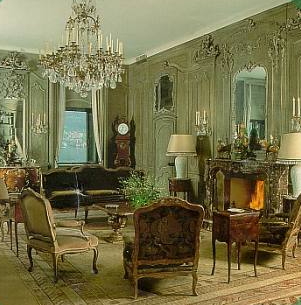 |
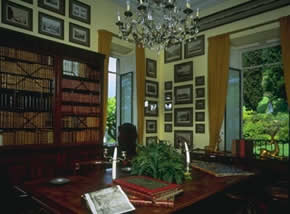 |
|
Architectural Notes Cardinal
Angelo Maria Durini already owned several villas at Mirabello
near Monza |
Porro- Lambertini family and later it passed to the
Arconati - Viscontis, who made some more architectural modifications.
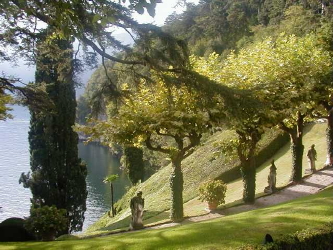 |
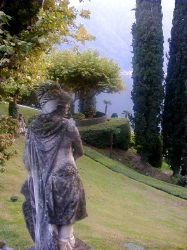 |
Tall, perfectly groomed Ilex hollies and pollarded planes
give vertical form and substance to the bones of the design.
The romantic beauty of the situation leaves a memorable impression!
The smoothness of the entire design creates great serenity.
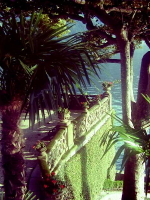 |
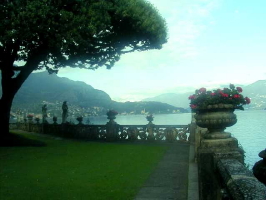 |
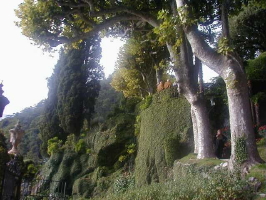 |
Continuation of the Walkway with its baroque statues
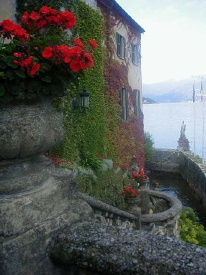 |
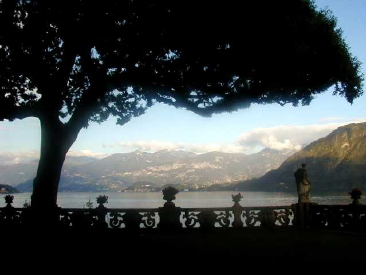 |
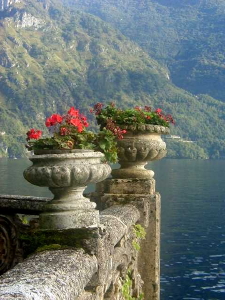 |
The villa overlooks Pliny's villa "Comedy" now submerged.
Behind the villa are more gardens.
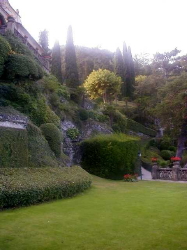 |
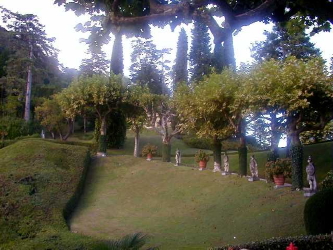 |
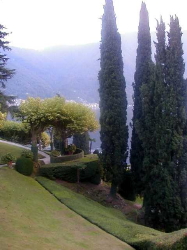 |
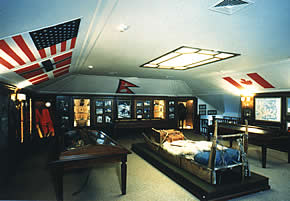 |
The last owner, the explorer Guido Monzino,
was the first Italian to climb Everest (in 1973)
and reached the North Pole in 1971.
The library and map room contain Monzino's collections
relating to the Polar regions and mountaineering.
his last great enterprise was to turn Balbianello into
an international center for the study of explorations.
The meeting rooms were re-furnished with valuable English and French
pieces of furniture;
superb collections of Chinese, African and pre-Colombian objects stood
side by side with an invaluable set of prints of Lake Como
and one of the finest collections of paintings on glass in existence.
 |
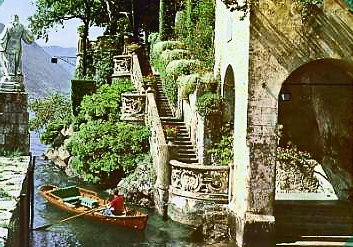 |
Balbianello can usually, only be reached by water
(regular boat service from Sala Comancina, Como or Lenno).
The waking approach is open only on the last Sunday of each month, Apri-Oct,
by a sign-posted path of roughly 800 meters, which starts from
the church square in Lenno.
We were able to walk to it. It
was quite a trek up hill!
Lenno
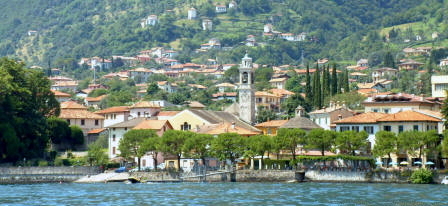 |
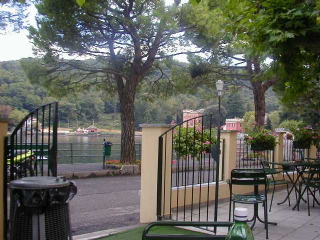 |
where Balbianello stands (left, out of view). We hiked to the villa from here.
North of Balbianello
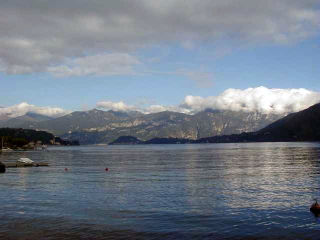 |
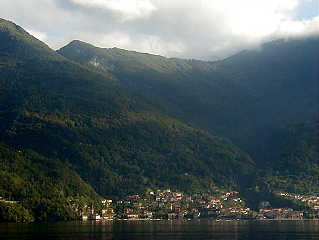 |
the stretch of water between the two headlands of Tremezzo and Bellagio.
This central part of the lake was one of the favorite holiday haunts of the Milanese aristocracy
and later, between the 19th and 29th century,
of a refined type of tourist for whom a tour of
|
Some
Loose Ends in the History of Balbianello
A couple of oar-strokes away from Balbiano is the enchanting headland of Dosso d'Avedo, where all that was left at the end of the 18th century were the romantic remains of the tiny church. After unsuccessfully trying to purchase Isola Comacina, the Cardinal turned his attention to that wooded promontory, on the edge of which he finally achieved his dream of building a splendid solitary place, where, now and then, he could go to read, study, think and hold discussions on literary subjects and the arts in general with a few lettered friends of his. The name he gave to this delightful place was Balbianello. |
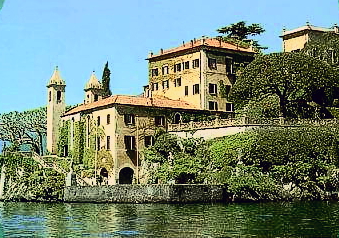 |

![]()
Balbianello is a property of FAI, The Italian Environment Foundation,
a trust set up on the model of the National Trust in England.
For information about other FAI
properties in Italy
Click here
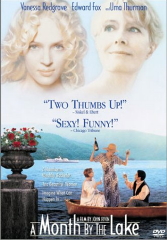 |
Villa
Balbianello was the setting for the English film,
A Month on the Lake,
starring Vanessa Redgrave and Uma Thurman.
The film has beautiful photography of the Villa, Lake Como, and
the surrounding villages.
Set in the period just before World War II, it gives a good view into
the
life of the
The movie is available
at amazon.com and at video rental stores.
Click
here
Return
to Index
Click here